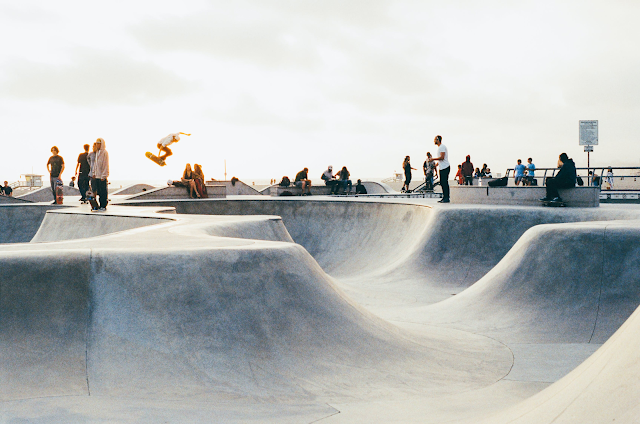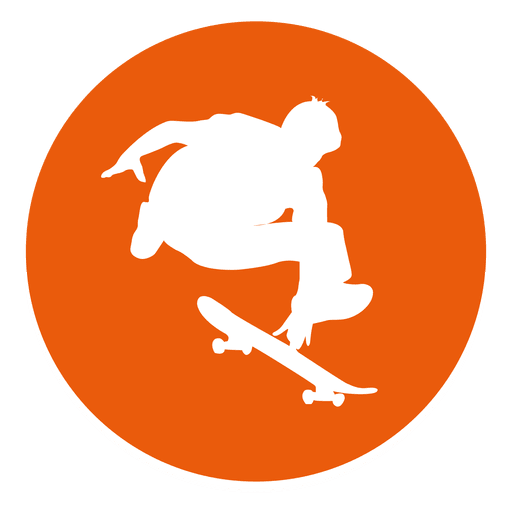Skating Locator
Skateparks

History of Skateparks
The first skatepark in the world, Surf City at 2169 E. Speedway, Tucson, Arizona opened for business on September 3, 1965. Patti McGee, Women’s National Champion, was here for the grand opening. It had concrete ramps and was operated by Arizona Surf City Enterprises, Inc. A skatepark for skateboarders and skaters which had plywood ramps on a half-acre lot in Kelso, Washington, USA opened in April 1966. It was lighted for night use. California’s first skatepark, the Carlsbad Skatepark opened on March 3, 1976. The World Skateboard Championships were held here on April 10, 1977. It operated until 1979, when it was buried intact beneath a layer of dirt for more than two decades, before being destroyed in 2005. The current Carlsbad Skatepark is in a different location. The East Coast’s first skatepark, Ocean Bowl Skate Park, in Ocean City, Maryland, USA, opened the first week of June, 1976. It is the oldest operating municipal skate park in the United States. Due to time, wear and the current needs of skaters, the old bowl and ramp were torn down in the Fall of 1997 and the new park opened in July 1998. In 1999 the City of Hermosa Beach, California opened a small skatepark at the site of the first skateboard competition. The competition held at the Pier Avenue Junior Hugh School (now a City museum) was organized by Dewey Weber across the street from his surf and skateboard shop. Makaha Skateboards was a sponsor of the competition. In 1987 an all wooden indoor skate park opened in Bristol, CT called CT Bike that is still in business today over 20 years later. CT Bike is where Tony Hawk made his debut when he was just a young boy on his first East Coast tour. The indoor skate park today is still operated by the same family who built the park despite a fire that threatened the park in 1988. In more extreme climates, parks were built indoors, often of wood or metal. By the end of the 1970s, the skateboarding fad had waned, and the original parks of the era began to close. A downturn in the general skateboard market in the 1980s and high liability insurance premiums contributed to the demise of the original skateparks. Some second-generation parks such as Upland, California’s Pipeline survived into the 1980s. However, few of the private parks of the 1970s remain, with the notable exception of Kona Skatepark in Jacksonville, Florida, United States. However, many public parks of that era can still be found throughout Western Europe, Australia and New Zealand.
The modern skatepark designs of the Pacific Northwest can be traced back to Burnside Skatepark, a DIY “barge build” beneath the Burnside Bridge in Portland, Oregon. Skateboarders used an area populated primarily by the city’s “undesirable elements” to create a skatepark, building one section at a time. The process is called “design/build” (D/B), and is a characteristic of many skateparks today. The design/build process ensures that adjacent skatepark features are harmonious and rideable, allowing skateboarders to create endless “lines” to ride among the many features.
Types of Skateparks
Unlike organized sports, like basketball or football, skateboarding has no set arena or rules and skateparks have no standard design template. Each skatepark is designed specifically to provide unique challenges to its users. There are, however, three main categories of skatepark design: bowl, street plaza and flow parks.
Bowl parks are designed to emulate and improve upon the pool skating experience. Skaters in bowl parks can move around the park without taking their feet off the board to push. The curved walls of bowls allow skaters to ride around and across the bowl in addition to the back and forth skating you might see on a traditional half pipe. Bowls and bowl parks come in an endless variety of shapes and sizes but most bowls are between 3′ and 12’ deep.
Street plaza parks are the favorite of the vast majority of skaters and they are designed to emulate and improve upon the street skating experience. Obstacles in a street plaza are styled to look like natural street terrain such as stairs, railings, planters and benches. Skaters will push off with their feet to gain momentum in a street plaza. The first public outdoor skate plaza is the Vancouver Skate Plaza, built in 2004 by New Line Skateparks.
Flow parks combine elements of both bowl parks and street plazas. In a well designed flow park a skater can pump around the parks curved walls such as quarter pipes, pump bumps and bowl corners without taking their feet off to push. They can use that speed to hit street obstacles such as stairs, railings and benches.
Skateparks may be privately or publicly owned. Privately owned skateparks usually have admission fees, while publicly owned skateparks are generally free. Many privately owned skateparks are indoors, usually in warehouses, roller rinks or buildings with high ceilings, especially in areas with snowy winters. Public skateparks are usually outdoors.
Skatepark construction can be divided into two major categories — prefabricated and custom built concrete. Prefabricated parks can be made of wood, plastic, sheet metal, and concrete. Most are designed and built by playground equipment manufacturers who present these parks as a cost effective alternative to custom designed concrete skateparks. In reality, custom built concrete skateparks can be quite cost competitive with prefabricated skate ramps.
Concrete parks, now “pretty much the industry standard”, according to an editor of Transworld Skateboarding magazine, they require fewer repairs and less maintenance.
Skatepark Elements
- Quarter pipe – Literal quarter of a pipe. There is usually a narrow metal rod running the length of the top edge; this is called the coping. There may also be flat platform connected to it at the top; this is called the deck. Quarter pipes have “transitions” which is the size of the radius of the ramps riding surface.
- Half-pipe – Two Quarter Pipes facing each other (half of a pipe). A smaller halfpipe that is less than 8–10 feet can be referred to as a “mini ramp”
- Bowl – a completely enclosed area of quarterpipes that curve in corners. The curve placement and opposing quarterpipe placement can manifest in any fashion.
- Deck – The flat elevated area used as a staging area above ramps and bowls.
- Spine – Two quarter pipes placed back to back, that do not contain a deck. Spines may exist in bowls and half-pipes
- Extension – extensions in quarter pipe or halfpipe ramps.
- Escalator – sloping increases or decreases in quarterpipe or halfpipe ramp.
- Flat – The flat lower areas between transitions, usually at grade.
- Vert wall – A vertical wall above, and sometimes slightly behind, a quarter pipe.
- Bank – These can vary in angle but are simply wedge ramps for traversing obstacles, i.e. elevated flats. They may contain curvature at the tops or on sides.
- Hip – Essentially two quarter pipes or banks forming an angle.
- Funbox – A combination of banks, flats, rails, kickers, etc. connected to each other to form mini gaps.
- Pyramid – Funbox-type ramp made from four banks put in a square pyramid shape, usually surrounding a flat.
- Launcher/Kicker – A curved bank a rider uses to launch into the air.
- Roll-in – A long sloping ramp used to gain speed.
- Step-up/Eurobox – A funbox type ramp consisting of a bank with a flat at the top and a second, higher flat after it; in other words a bank-to-flat setup with a section removed from the bank part.
- Wall-box – In an indoor skatepark, this is a funbox built against the wall of the park; in an outdoor skatepark, it is a funbox with a wall splitting it down the middle.
- Bowl – A circular pool.
- Pool – Usually an actual swimming pool that has been drained out for skateboarding.
- Foam Pit – A pile of foam pads to land safely into while learning tricks, usually found after a launch ramp.
- Flat rail – A rail set level with ground.
- Sloped rail – A rail set at an angle.
- Kinked rail – A rail with two flat sections, one higher than the other, and a sloped section in the middle connecting them.
- Stair – A simple staircase.
- Hand rail – A rail going with a staircase, either extended from the staircase or off an adjacent wall
- Kidney bowl – a bowl roughly in the shape of a human kidney
- Egg bowl – a bowl shaped like an egg
- Cradle – Spherical bowl turned on its side, typically connected with a bowl. Enables inverted and over-vert carving
Information compiled from Wikipedia, read full article here.
